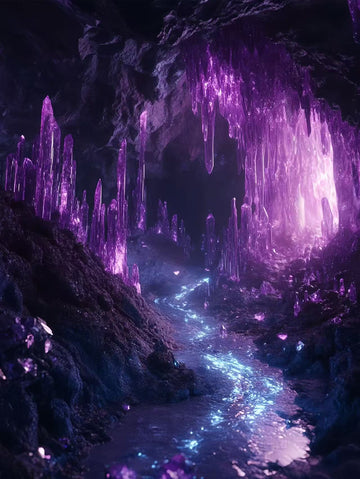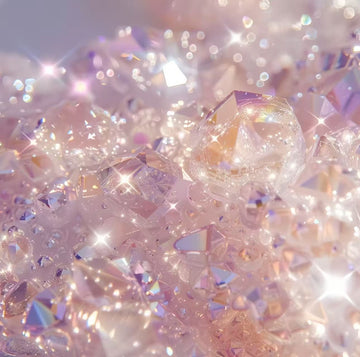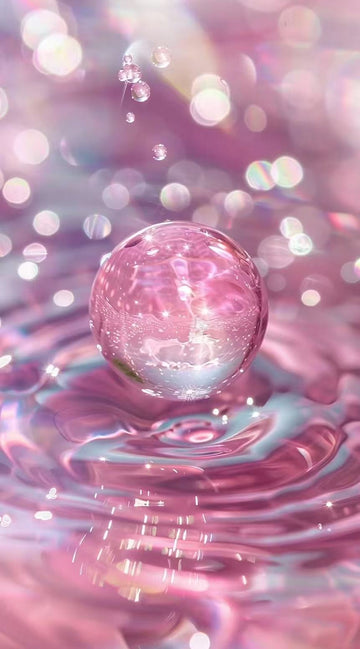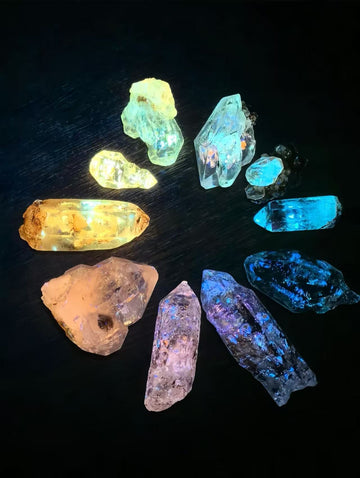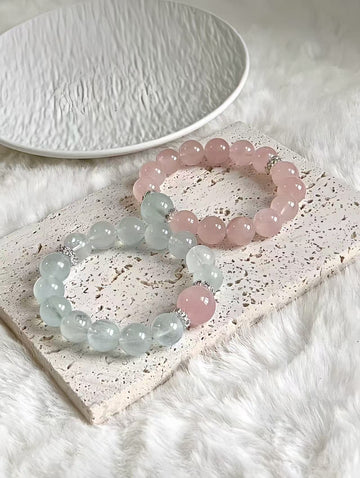🌍 Introduction: The Sparkle of Nature
Quartz isn’t just a pretty face in the world of minerals—it’s one of the most abundant and versatile crystals found on Earth. From the sparkling amethyst in jewelry to the sand on your favorite beach, quartz is everywhere. But have you ever wondered how quartz is actually formed? This blog takes you on a journey through time, heat, and pressure to uncover the birth of quartz in nature.
⛏️ What is Quartz?
Quartz is a silicate mineral composed of silicon dioxide (SiO₂). It belongs to the trigonal crystal system and can appear in many forms—from large, well-formed crystals to tiny grains.
🔬 Chemical Composition
-
Formula: SiO₂
-
Hardness: 7 on the Mohs scale
-
Transparency: Transparent to opaque
📏 Common Crystal Habits
-
Hexagonal prisms
-
Drusy aggregates
-
Microcrystalline masses
🔥 Geological Conditions for Quartz Formation
Quartz doesn't just appear—it forms under specific geological conditions that include:
🌋 High Temperatures and Pressure
Quartz often forms from molten magma or in hydrothermal veins where mineral-rich hot water cools and crystallizes.
💧 Silica-Rich Environments
Quartz is the result of cooling silica in both igneous and metamorphic rocks. Over time, this silica crystallizes into solid quartz.
🧪 The Crystallization Process
The formation of quartz involves the precipitation of silicon dioxide from superheated solutions.
Step-by-Step Formation
-
Magma or superheated water carries dissolved SiO₂.
-
As it cools down, the solution becomes supersaturated.
-
Crystals start to form as SiO₂ precipitates.
-
Over thousands or even millions of years, quartz crystals grow.
⛰️ Types of Rocks Where Quartz Forms
Quartz is found in all three major rock types:
🪨 Igneous Rocks
-
Granite
-
Rhyolite
These rocks often contain crystalline quartz formed from magma.
🔁 Metamorphic Rocks
-
Quartzite
-
Schist
Formed under intense heat and pressure.
🌊 Sedimentary Rocks
-
Sandstone
-
Chert
Quartz forms as tiny grains or through chemical precipitation.
💎 Types of Quartz Crystals
Quartz comes in both macrocrystalline and microcrystalline forms.
🌈 Popular Varieties
-
Amethyst (purple)

-
Citrine (yellow/orange)

-
Rose Quartz (pink)

-
Smoky Quartz (brown to black)

-
Milky Quartz (white)

🔄 Synthetic Quartz: Man-Made Marvels
Not all quartz is natural. Synthetic quartz is produced for industrial use, especially in electronics and watches due to its piezoelectric properties.
🧭 Where is Quartz Found in Nature?
Quartz is virtually everywhere—from deserts to mountain ranges.
🌍 Major Deposits
-
Brazil 🇧🇷
-
Madagascar 🇲🇬
-
United States 🇺🇸 (Arkansas, Colorado)
🧙♂️ Historical & Cultural Significance
Quartz has been revered by civilizations for centuries.
-
Used in ancient tools and artifacts
-
Symbol of healing and energy in metaphysical practices
-
Valued in spiritual and ceremonial objects
🛠️ Uses of Quartz Today
Quartz isn’t just beautiful—it’s also technologically vital.
📱 Common Applications
-
Watches & timekeeping (piezoelectric effect)
-
Glassmaking
-
Electronics and semiconductors
-
Countertops and tiles
🌱 Environmental Formation & Sustainability
Quartz is a naturally occurring substance that forms without toxic by-products, making it an eco-friendly material in industries.
🧭 Crystal Growing: How to Make Quartz in a Lab
Scientists can grow quartz crystals using a method called hydrothermal synthesis, replicating natural processes inside high-pressure chambers.
🧠 Interesting Quartz Facts
-
It's one of the last minerals to crystallize in cooling magma.
-
Quartz can withstand extreme weathering, which is why it's found in sands.
-
Clear quartz is sometimes called the “Master Healer” in crystal healing communities.
🧽 How to Identify Quartz in the Wild
Look for:
-
A glassy luster
-
Hardness (it can scratch glass)
-
Conchoidal fracture—a curved break pattern
🤔 Conclusion: The Enduring Power of Quartz
From deep geological processes to sparkling gemstone collections, quartz is a testament to Earth’s natural artistry. Whether it’s in your phone or on your ring, knowing how quartz is formed adds a new level of appreciation for this magical mineral.
🙋♀️ FAQs About Quartz Formation
1. How long does it take for quartz to form?
It can take thousands to millions of years, depending on the geological environment.
2. Can quartz form underwater?
Yes, quartz can form in hydrothermal vents and sedimentary basins underwater.
3. What makes quartz so durable?
Its hardness (7 on the Mohs scale) and chemical stability make it resistant to weathering.
4. Can quartz grow bigger over time?
Yes! Given the right conditions, quartz crystals can continue to grow over millennia.
5. Is all quartz clear?
No—quartz comes in many colors due to impurities or irradiation.

